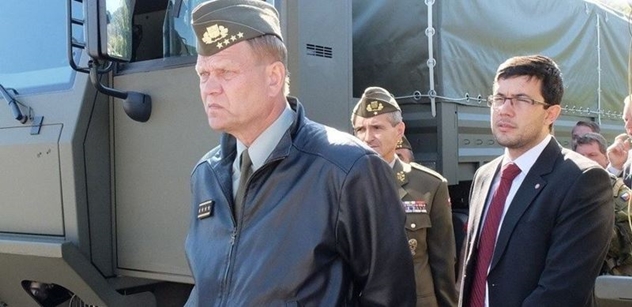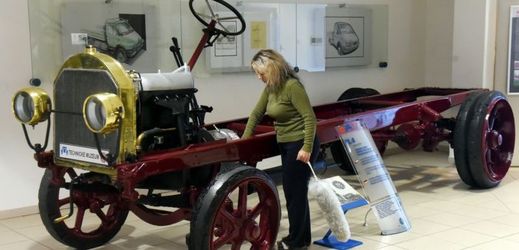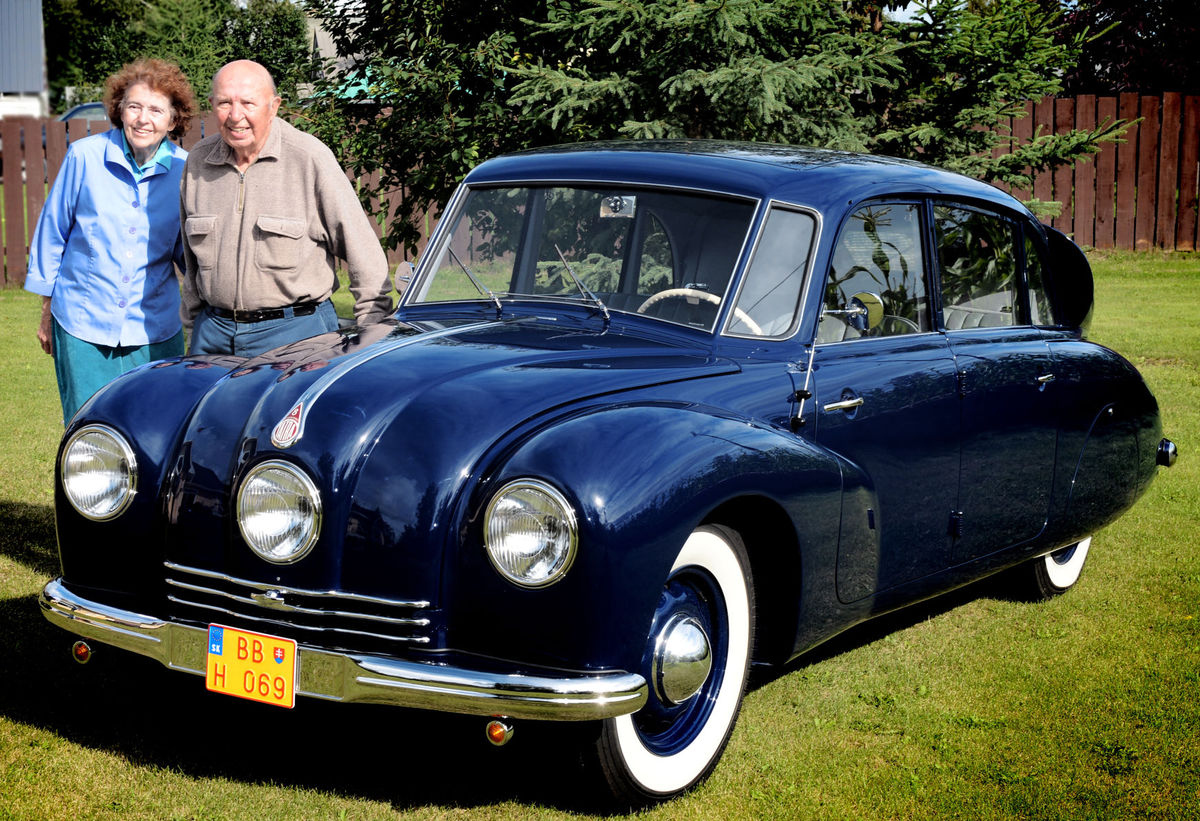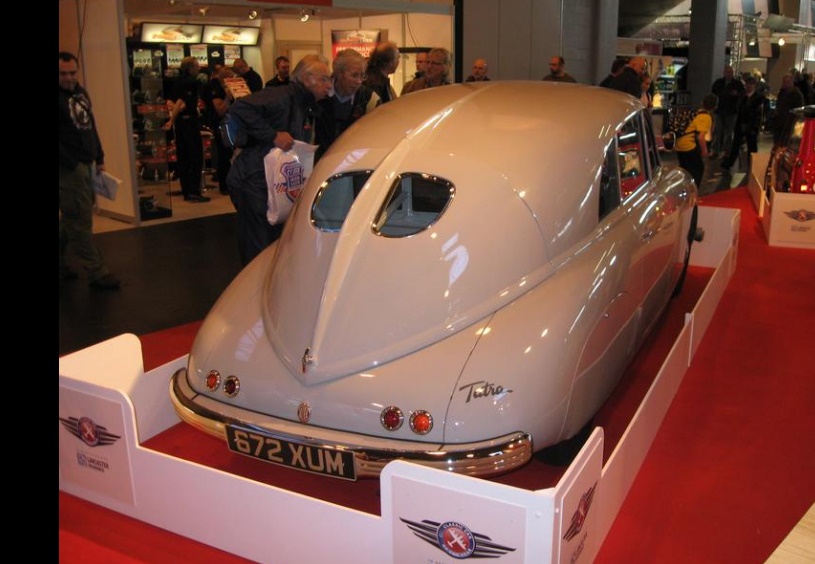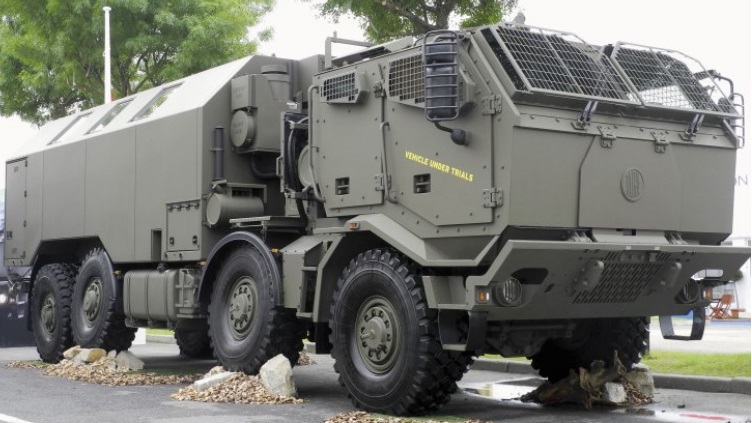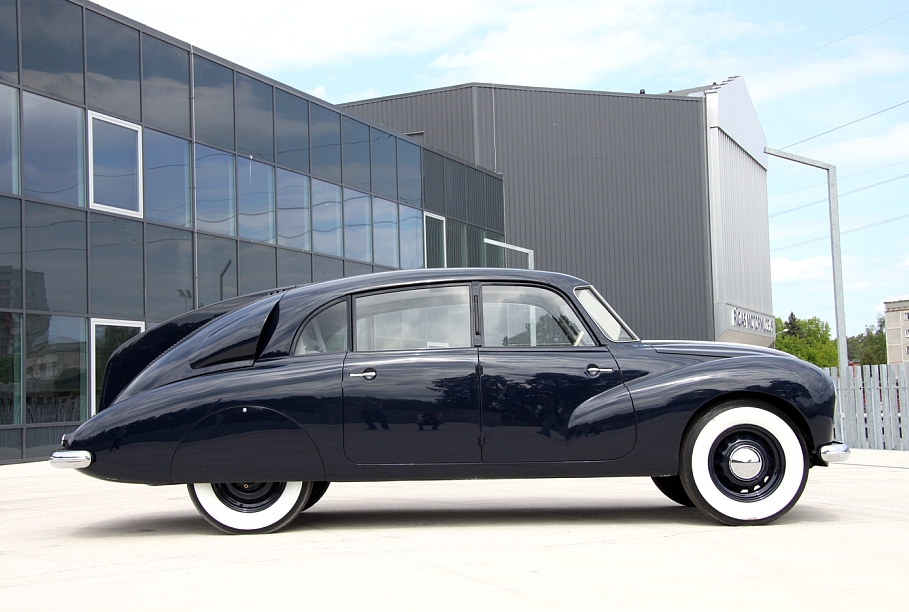Czechoslovak Chief of Staff visits Tatra
Slovenska Strela
News about the Tatra Museum and its expansion
Paul Gavora and his T87
FAIRBANKS – The Golden Days Parade this year features two Czechoslovakian imports that both traveled a long way to be here — Paul Gavora and his newly-renovated Tatra 87.
Much of the information here is courtesy of the Gavora family.
Paul Gavora, of course, is a well-known Fairbanksan. He was born in the small village of Brezova in western Slovakia in 1931. At the age of 16, he was forced to leave his home and family after the Soviets installed a puppet regime in Czechoslovakia after the war. He went first to Austria, then to Germany, and finally to America on a United Nations boat for war refugees.
In Colorado, he met his bride-to-be Donna Tighe and in 1958, they made their way to Fairbanks.
The Tatra 87 is also from Czechoslovakia, named after the mountain range that forms the border between Slovakia and Poland. It was built in 1947 by Tatra, one of the oldest car manufacturers in the world. Tatra has been producing cars and trucks since 1897.
This Tatra 87 originated in central Europe. The Tatra, a luxury five-seat sedan, was called the “Nazi killer” and the “Czech secret weapon” during World War II because it was so powerful and aerodynamic that German soldiers had a tendency to kill themselves in it speeding around occupied Czechoslovakia. It could reach speeds of nearly 100 mph.
Even today, nearly 70 years after it was manufactured, the Tatra 87 is a unique automobile. It is streamlined, based upon the design of the Tatra 77, the first car designed for aerodynamic purposes.
The car has three headlights. Its sleek, air-slicing curves are highlighted by a large rear fin. That fin helps divide the air pressure on both sides of the car, a technique used in later aircraft, according to Wikipedia.
Combine that design with a rear-mounted, air-cooled overhead cam V-8 engine, and you have a truly unique car that looks like a zeppelin and drives like a speedboat.
Design elements of this car were copied by later car manufacturers, including Ferdinand Porsch. He was sued by Tatra for his design of the Volkswagen Beetle.
This particular car was discovered about 25 years ago by Paul Gavora’s brother Svetozar. He acquired it as an undriveable, rusting hulk.
Sveto was determined to restore the car himself and he tinkered with it for years. Fifteen years ago, Paul Gavora came upon the vehicle, lying in pieces in Sveto’s garage in Slovakia.
It took years, but Paul finally convinced his brother to sell the car to him. Then Paul and his nephew Martin Gavora had the car shipped to the original Tatra headquarters in the Czech Republic to be restored.
The result is a gleaming blue, rare antique car with all its original parts, including the original V-8 engine.
From the Czech Republic, the newly-restored Tatra traveled by truck to Antwerp Belgium. From there, it was placed in a shipping container and made the long trip across the Atlantic, through the Panama Canal and up the West Coast to Seattle. There, Paul’s son Matthew Gavora put the car on a trailer and towed it up to Fairbanks.
Other Tatra 87s are on display in museums and private collections all over the world. But Fairbanksans can see the local Tatra 87 in the Golden Days Parade on Saturday, driven by owners Paul and Donna Gavora.
It’s a spectacular way to celebrate the end of a very long journey.
Cars We Remember: Government built Czech Tataplan memories
Tatra unveils new tactical trucks
Latvian Motor Museum in Riga has restored its T 87
Latvian Text + Video: http://www.lsm.lv/lv/raksts/motori/dzive/iekarojamais-tatra-87.a188705/
Czechoslavak Group launches new Tatra division to build GD and Nexter vehicles

The Czechoslovak Group (CG) officially launched a new division named Tatra Defence Vehicles (TDV) on 31 May.
TDV is a subsidiary of CG-owned Tatra Trucks and is located at the Korpivnice production facility.
TDV will focus on licensed production of the Steyr-Daimler-Puch Spezialfahrzeuge Pandur II CZ 8×8 armoured vehicle and its variants for the Army of the Czech Republic (ACR) and for foreign customers.
TDV will also produce under license the Nexter Titus 6×6 MRAP vehicle once it is officially accepted by the ACR, as well as produce and modify armoured cabs for the Tatra 810 6×6 medium truck currently in service with the ACR.
The Pandur II 8×8 is an improved modular all-wheel-drive version of the Pandur 6×6 APC wheeled armoured vehicle. It was developed as a private venture by the Austrian company Steyr-Daimler-Puch Spezialfahrzeuge and is currently in production for the Portuguese Armed Forces. Steyr-Daimler-Puch Spezialfahrzeuge is part of General Dynamics European Land Combat Systems, which is also the parent company of MOWAG of Switzerland and Santa Bárbara Sistemas of Spain.
The most significant change is the introduction of an 8×8 configuration with more interior space. The construction is an all-welded steel hull with optional armour upgrades. The basic armour package is designed to protect against 7.62 to 14.5 mm (0.300 to 0.571 in) armour-piercing rounds (customers may select a choice of armour thickness). The vehicle is designed to be transportable in a Lockheed Martin C-130 Herculestransport aircraft. The driver is seated on the left at the front and the engine is to the right. The driver is provided with a single piece hatch cover as well as three day periscopes, one of which can be replaced by a passive periscope for night missions. The vehicle is fitted with a two-stage synchronized distribution gear box for both road and cross country use. Improved suspension will be fitted for optimum cross country mobility. The vehicle is designed to take a number of turret systems (such as the SP 30 turret also mounted on the ASCOD AFV of the Spanish and Austrian Armies), or it can be used as a standard APC with a mounted machine gun.
With the turret the vehicle can carry 6 infantry. Without the turret, it can carry 12.
The Pandur 8×8 APC is manufactured in Austria while export versions are also built in the Czech Republic and licensed versions in Barreiro, Portugal.
Czech variants
The Czech Pandur II 8×8 CZ differs from the original version in that a new breakwater controlled from inside the vehicle has been fitted, and the driver’s hatch is fitted for CDND-1 night vision apparatus. The armor is designed to protect against 14.5×114 (with RAFAEL add-on passive armour). SSAB ARMOX 500[5] armour steel is used for the bottom side of the hull which has an intermediate floor with suspended from wall and ceiling mounts rather than floor mounted. The standard Pandur II has a flat bottom, but Pandur II CZ has its bottom shaped to the “/\” (reversed “V”) which some sources maintain reduces the effect of mine blast on passengers.
There are three robust cameras (left, right and rear) giving the ability to driver to reverse without leader’s help or observe around the vehicle. The driver has one monitor for this purpose. The cameras are from Orlaco company[6] much like monitor in troop section.[7] Czech Pandurs II 8×8 also include navigation, information, communication and identification system.
Pandurs without RCWS-30 will be unarmed or equipped with Rafael Mini-Samson RCWS-12.7.[8][9] Rafael RCWSs bought by Czech republic: 78x RCWS-30, 14 RCWS-30 (with no Spike-LR missiles), 93 Mini-Samson RCWS units that carry 12.7mm machine gun. Its Cummins ISLe T450 455HP diesel engine can be removed and replaced in 30 minutes.
- KBVP (kolové bojové vozidlo pěchoty)[10][11] – IFV version equipped with upgraded Rafael RCWS-30. Upgraded RCWS-30 include: 30mm ATK MK 44, optional launcher pod for two RAFAEL Spike-LR anti-tank/multi-purpose guided missiles, coaxial 7.62mm machine gun M240, and two quadruple (2×4) 76mm Wegmann smoke grenade launcher tubes. Fire-ready ammunition accommodates 140 high-explosive (HE) and 60 armor-piercing (AP) 30mm rounds, 2 Spike-LR missiles, 250×7.62mm rounds, and 8×76.2mm smoke grenades. The missiles container is newly located vertically. In contradistinction to the original RCWS-30, the Czech RCWS has two new CCD/IR cameras with rangefinder/laser designator with 360° coverage. The original camera was replaced by a new one and a second camera is mast-mounted on the right side of the RCWS (circa 3,5 meters above the ground). The commander’s hatch visor was removed. With new mast-mounted camera the commander gained new ability to independently observe the surroundings and to seek and track enemies (commander can take over weapons’s control or designate target for gunner). All Czech IFVs will be equipped with mast-mounted meteorological sensor with laser illumination warner connected to FCS. This mast-mounted system will be located on the left side of RCWS just like commander’s independent thermal viewer.
New Tatra Museum II ?
A new Tatra Museum in Koprivnice?
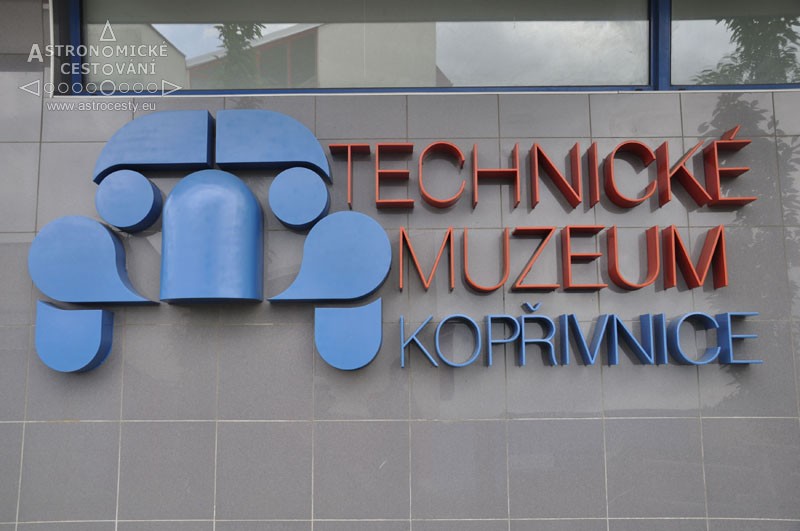
Moravian-Silesian region and the Tatra Kopřivnice are planning the creation of a new Technical Museum. One of the most visited sites in the country would be relocated to the premises of the Tatra company. The project, worth 120 million crowns, but caused resentment on the Kopřivnice city hall. They argue that they were not informed.
Dilapidated building of the former foundry Tatra Kopřivnice immediately opposite of the train station could be in the future a new technical museum Kopřivnice.
“Tatra moment has 200 veterans actually possible exhibits but there is nowhere to place,” says spokesman Andrej Cirtek. The existing museum is housed in a building which was originally the second part of the culture house. According to museum director Lumíra Kaválka space that belongs to the city, from the very beginning small. “The collection was given to exhibitions without without match the original building downright museum requirements,” says Kaválek.
The museum brings to Kopřivnice year 100,000 people and generates profit. Kopřivnická Hall criticizes therefore, that a new project only became aware of the resolution of the regional council. They claim that the mayor of ODS Miroslav Kopečný.
“The fact that Tatra Technical Museum is the seventh most visited in the Czech Republic, I think deserves to be on how the city was informed and was in the preparation of such a project invited.”
“We Kopřivnice with the city to act, but at the moment I have the information that they should already reach the town Koprivnice Tatra managers,” responds CSSD deputy governor Martin Sikora.
Regional officials had to hurry with the application for European aid. If it gets in the fall county, could the new museum to be opened in two to three years.
